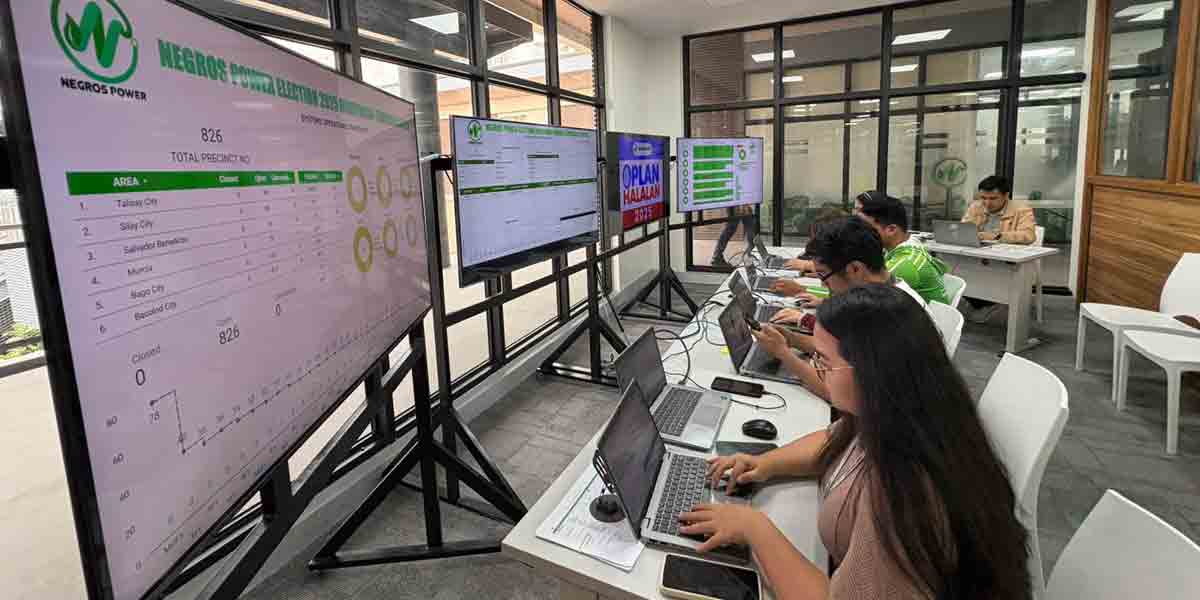By Sharon Kumar
Last of 2 parts
Microsoft’s Copilot
Microsoft’s Copilot is a productivity-focused AI assistant designed to enhance workplace efficiency through seamless integration with the Microsoft 365 suite. By embedding AI-powered automation directly into tools like Word, Excel, PowerPoint, Outlook, and Teams, Copilot serves as an intelligent assistant that streamlines workflows, automates repetitive tasks, and enhances document generation.
Ideal for businesses, enterprise teams, and professionals who heavily rely on Microsoft 365 applications for their daily operations, Microsoft’s Copilot is particularly beneficial for corporate professionals, financial analysts, project managers, and administrative staff who need AI-powered assistance to enhance productivity and reduce time spent on routine tasks. However, organizations that prefer open-source AI models or require flexible, cross-platform compatibility may find Copilot less suitable, especially if they rely on non-Microsoft software ecosystems for their workflows.
Microsoft 365 Copilot is available across Microsoft’s core productivity applications, providing AI-powered assistance for document creation, email drafting, data analysis, and meeting summarization. The service costs approximately $30 per user per month and typically requires an annual subscription. However, pricing can vary based on region and enterprise agreements, with some organizations receiving customized pricing based on their licensing structure.
One of Copilot’s most significant advantages is its deep ecosystem integration within Microsoft 365. For businesses and professionals already using Microsoft Office, Copilot enhances workflows by embedding AI-driven suggestions and automation directly within familiar applications. Its task automation capabilities are another significant benefit, helping users generate reports, summarize meetings, draft emails, and analyze data more efficiently. Furthermore, Copilot receives continuous updates backed by Microsoft’s substantial investments in AI and cloud computing, ensuring regular improvements in performance, accuracy, and feature expansion.
In contrast, one of the significant drawbacks of Microsoft’s Copilot is its ecosystem lock-in—Copilot is tightly coupled with Microsoft 365, meaning its full potential is only realized by organizations already invested in Microsoft’s software ecosystem. Limited flexibility is another concern, as it lacks extensive third-party integrations found in more open AI platforms, making customization difficult for businesses that rely on a broader range of tools. Additionally, some users report occasional response inconsistencies, where Copilot may lose context in long sessions or provide overly generic responses, requiring manual refinement.
Meta AI
Meta’s suite of AI tools, built on its open-weight LLaMA models, is a versatile and research-friendly AI suite designed for both general use and specialized applications. Meta’s approach prioritizes open-source development, accessibility, and integration with its social media platforms, making it a unique player in the AI landscape. It is ideal for developers, researchers, and AI enthusiasts who want free, open-source models that they can customize and fine-tune. It is also well-suited for businesses and brands leveraging Meta’s social platforms, as its AI can enhance customer interactions and content creation within apps like Instagram and WhatsApp.
Meta AI is highly accessible for developers and researchers due to its open-source availability and flexibility. However, businesses and casual users may find it less intuitive compared to AI models with more refined user-facing tools. Additionally, companies needing strong content moderation and regulatory compliance may prefer more tightly controlled AI systems from competitors like Microsoft or Anthropic.
Meta AI operates on a range of LLaMA models, including LLaMA 2 and LLaMA 3, which serve as the foundation for various applications. Specialized versions, such as Code Llama, are tailored for coding tasks, offering developers AI-powered assistance in programming.
One of Meta AI’s standout features is its open-source licensing, which makes many of its tools free for research and commercial use. However, enterprise users may encounter service-level agreements (SLAs) or indirect costs, especially when integrating Meta’s AI with proprietary systems or platform partnerships.
Meta AI’s biggest advantage is its open-source and customizable nature, allowing developers to fine-tune models for specific use cases. This fosters greater innovation, flexibility, and transparency compared to closed AI systems. Additionally, Meta AI is embedded within popular social media platforms like Facebook, Instagram, and WhatsApp, giving it massive consumer reach and real-time interactive capabilities. Meta also provides specialized AI models, such as Code Llama, for programming and catering to niche technical applications.
Despite its powerful underlying technology, Meta AI’s user interfaces and responsiveness can sometimes feel less polished than those of competitors like OpenAI and Microsoft. Additionally, Meta has faced controversies regarding content moderation and bias, raising concerns about AI-generated misinformation and regulatory scrutiny. Another challenge is ecosystem fragmentation; with multiple AI models and branding under Meta, navigating the differences between Meta AI, LLaMA, and other offerings can be confusing for both developers and general users.
AI’s Impact on the Future of Technology
As AI adoption grows, the energy demand for training and operating these models increases. Companies are developing more efficient AI models while managing infrastructure costs. Modern AI models, particularly those known as large language models (LLMs), are powerhouses that demand vast computational resources. Training these models involves running billions of calculations across highly specialized hardware over days, weeks, or even months.
The process is analogous to running an industrial factory non-stop—a feat that requires a tremendous amount of energy. The rise of AI assistants, automation, and multimodal capabilities will further shape industries, from customer support to content creation. “The worst thing you can do is have machines wasting power by being always on,” said James Coomer, senior vice president for products at DDN, a California-based software development firm, during the 2023 AI conference ai-PULSE.
AI competition will likely drive further advancements, leading to smarter, more accessible, and environmentally conscious AI solutions. However, challenges related to cost, data privacy, and ethical considerations will continue to shape the development of AI.
Sustainable AI and the Future
AI companies are actively addressing concerns about energy consumption and sustainability by optimizing their models to enhance efficiency while minimizing power usage. One key approach is leveraging renewable energy sources, such as solar and wind power, to supply data centers, which significantly reduces their carbon footprint. Additionally, advancements in hardware are being developed to support more energy-efficient AI computation, enabling systems to perform complex tasks with lower energy demands. These innovations not only help reduce environmental impact but also contribute to long-term cost savings for AI companies.
Beyond technological improvements, regulatory policies are being introduced to ensure AI growth aligns with environmental sustainability. Governments and industry leaders need to work together to establish guidelines that encourage responsible energy consumption while promoting research into eco-friendly AI solutions. However, the fear of governmental regulation often makes technology leaders hesitant to collaborate.
One voice at the forefront of global AI governance is Amandeep Singh Gill, the United Nations Secretary-General’s envoy on technology, who emphasizes the importance of collaborative governance in AI development—and sustainable development needs to be part of this cooperation and coordination.
“[W]e have to find ways to engage with those who are in the know,” he said in a September 2024 interview in Time. “Often, there’s a gap between technology developers and regulators, particularly when the private sector is in the lead. When it comes to diplomats and civil servants and leaders and ministers, there’s a further gap. How can you involve different stakeholders, the private sector in particular, in a way that influences action? You need to have a shared understanding.”
No matter the level of collaboration between the private and public sectors, companies need to aggressively explore emission-mitigation methods like carbon offset programs and energy-efficient algorithms to further mitigate their environmental impact. By integrating these strategies, the AI industry is making strides toward a more sustainable future without compromising innovation and progress.
Balancing Innovation and Responsibility
AI is advancing rapidly, with OpenAI, Google, Anthropic, DeepSeek, CoPilot, and MetaAI leading the way. While these models offer groundbreaking capabilities, they also come with costs, limitations, and sustainability concerns.
Businesses, researchers, and policymakers must prioritize responsible AI development while maintaining accessibility and efficiency. The Futurist: The AI (R)evolution panel discussion held by the Washington Post brought together industry leaders to explore the multifaceted impact of artificial intelligence (AI) on business, governance, and society. Martin Kon of Cohere explains that his role is securing AI for business with an emphasis on data privacy, which is essential for “critical infrastructure like banking, insurance, health care, government, energy, telco, etc.”
Because there’s no equivalent of Google Search for enterprises, AI, Kon says, is an invaluable tool in searching for needles in haystacks–but it’s complicated: “Every year, those haystacks get bigger, and every year, the needles get more valuable, but every enterprise’s haystacks are different. They’re data sources, and everyone cares about different needles.” He is, however, optimistic on the job front, maintaining that the new technology will create more jobs and greater value than many critics fear.
“Doctors, nurses, radiologists spend three and a half hours a day on admin. If you can get that done in 20 minutes, that’s three hours a day you’ve freed up of health care professionals. You’re not going to fire a third of them. They’re just going to have more time to treat patients, to train, to teach others, to sleep for the brain surgery tomorrow.”
May Habib, CEO of Writer, which builds AI models, is similarly optimistic, describing AI as “democratizing.” “All of these secret Einsteins in the company that didn’t have access to the tools to build can now build things that can be completely trajectory-changing for the business, and that’s the kind of vision that folks need to hear. And when folks hear that vision, they see a space and a part for themselves in it.”
Sy Choudhury, director of business development for AI Partnerships at Meta, sees a vital role for AI on the public sector side. “[I]t can be everything very mundane from logistics all the way to cybersecurity, all the way to your billing and making sure that you can talk to your state school when you’re applying for federal student–or student loans, that kind of thing.”
Rep. Jay Obernolte (R-CA), who led the House AI Task Force in 2024, acknowledges the need for “an institute to set standards for AI and to create testing and evaluation methodologies for AI” but emphasizes that “those standards should be non-compulsory…” And while agreeing that AI is “a very powerful tool,” he says that it’s still “just a tool,” adding that “if you concentrate on outcomes, you don’t have to worry as much about the tools…”
But some of those outcomes, he admits, can be adverse. “[O]ne example that I use a lot is the potential malicious use of AI for cyber fraud and cyber theft,” he says. “[I]n the pantheon of malicious uses of AI, that’s one of the ones that we at the task force worried the most about because we say bad actors are going to bad, and they’re going to bad more productively with AI than without AI because it’s such a powerful tool for enhancing productivity.”
Consumers can also do their part by managing AI usage wisely—turning off unused applications, optimizing workflows, and advocating for sustainable AI practices. AI’s future depends on balancing innovation with responsibility. The challenge is not just about creating smarter AI but also ensuring that its growth benefits society while minimizing its environmental impact.
Author Bio: Sharon Kumar is a technology editor at The Observatory, where he provides analysis and critical perspectives on the rapidly evolving tech landscape. As a seasoned MAANG tech professional with over a decade of experience in program management, strategic planning, and technology-driven business solutions, including AI and system performance optimization, Kumar has a deep understanding of emerging trends, digital infrastructure, and software development.
Source: Independent Media Institute
Credit Line: This article was produced by The Observatory, a project of the Independent Media Institute.





















